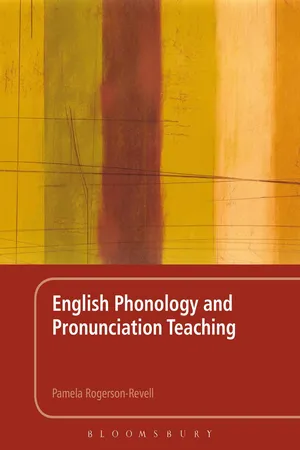
- 368 pages
- English
- PDF
- Available on iOS & Android
English Phonology and Pronunciation Teaching
About This Book
This book aims to provide a clear description of key aspects of English phonology in order to help teachers diagnose and prioritize problem areas in pronunciation. It also aims to develop an awareness of current issues and relevant research in the field to inform teachers decisions, not only about what to teach, but how to teach pronunciation, particularly in EIL contexts. Specifically, it aims to enable readers to: * Understand key terms and concepts in phonology and phonetics
* Become aware of current issues and debates in research and apply these to pronunciation teaching, particularly in EIL contexts
* Conduct phonological analysis of learner language, including phonemic transcription
* Diagnose and assess learner's pronunciation difficulties and needs
* Plan a structured pronunciation syllabus The book assumes no prior knowledge and is a key resource for both newcomers and experienced practitioners in the fields of English Language Teaching as well as students of applied linguistics.
Frequently asked questions
Information

Table of contents
- Cover
- Contents
- List of Illustrations
- About this Book
- 1 Phonology and Pronunciation Learning and Teaching
- 2 Research and L2 Phonological Acquisition
- 3 Speech Sounds
- 4 Consonants
- 5 Vowels
- 6 Phonemes in Context
- 7 The Syllable
- 8 Phonology Review 1
- 9 Word Stress
- 10 Features of Connected Speech
- 11 Intonation
- 12 Phonology Review 2
- 13 Pronunciation in the Classroom
- 14 Pronunciation Teaching: Some Questions Answered
- 15 Pronunciation Problem Areas
- References
- Further Resources
- Key to Activities and Reviews
- Glossary of Key Terms
- Index